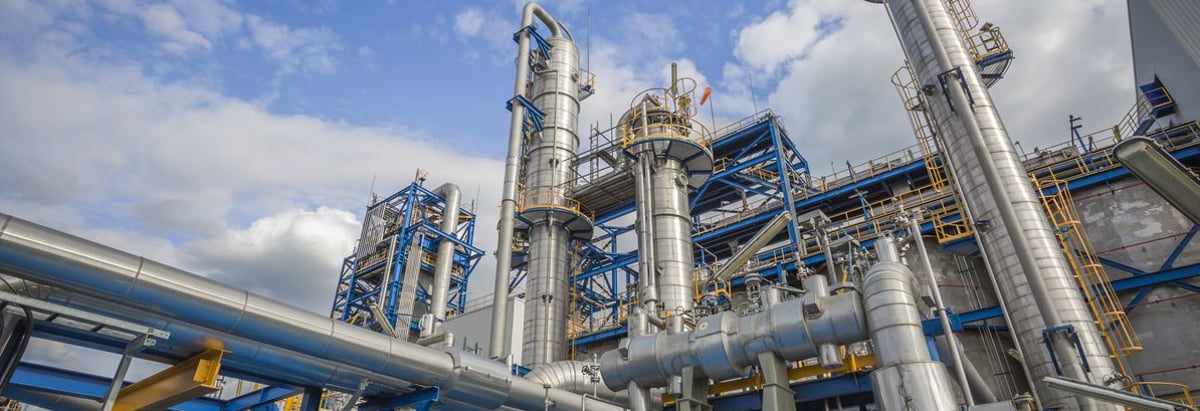Stock Analysis

David Iben put it well when he said, 'Volatility is not a risk we care about. What we care about is avoiding the permanent loss of capital.' So it seems the smart money knows that debt - which is usually involved in bankruptcies - is a very important factor, when you assess how risky a company is. As with many other companies HELLENiQ ENERGY Holdings S.A. (ATH:ELPE) makes use of debt. But is this debt a concern to shareholders?
Why Does Debt Bring Risk?
Debt is a tool to help businesses grow, but if a business is incapable of paying off its lenders, then it exists at their mercy. If things get really bad, the lenders can take control of the business. While that is not too common, we often do see indebted companies permanently diluting shareholders because lenders force them to raise capital at a distressed price. Of course, plenty of companies use debt to fund growth, without any negative consequences. When we examine debt levels, we first consider both cash and debt levels, together.
Check out our latest analysis for HELLENiQ ENERGY Holdings
How Much Debt Does HELLENiQ ENERGY Holdings Carry?
The image below, which you can click on for greater detail, shows that at September 2024 HELLENiQ ENERGY Holdings had debt of €2.36b, up from €2.12b in one year. However, it also had €584.4m in cash, and so its net debt is €1.77b.
A Look At HELLENiQ ENERGY Holdings' Liabilities
Zooming in on the latest balance sheet data, we can see that HELLENiQ ENERGY Holdings had liabilities of €2.50b due within 12 months and liabilities of €2.51b due beyond that. Offsetting this, it had €584.4m in cash and €850.3m in receivables that were due within 12 months. So its liabilities outweigh the sum of its cash and (near-term) receivables by €3.57b.
This deficit casts a shadow over the €2.36b company, like a colossus towering over mere mortals. So we definitely think shareholders need to watch this one closely. After all, HELLENiQ ENERGY Holdings would likely require a major re-capitalisation if it had to pay its creditors today.
We measure a company's debt load relative to its earnings power by looking at its net debt divided by its earnings before interest, tax, depreciation, and amortization (EBITDA) and by calculating how easily its earnings before interest and tax (EBIT) cover its interest expense (interest cover). The advantage of this approach is that we take into account both the absolute quantum of debt (with net debt to EBITDA) and the actual interest expenses associated with that debt (with its interest cover ratio).
HELLENiQ ENERGY Holdings's net debt is sitting at a very reasonable 2.3 times its EBITDA, while its EBIT covered its interest expense just 4.5 times last year. While these numbers do not alarm us, it's worth noting that the cost of the company's debt is having a real impact. Shareholders should be aware that HELLENiQ ENERGY Holdings's EBIT was down 33% last year. If that decline continues then paying off debt will be harder than selling foie gras at a vegan convention. When analysing debt levels, the balance sheet is the obvious place to start. But ultimately the future profitability of the business will decide if HELLENiQ ENERGY Holdings can strengthen its balance sheet over time. So if you're focused on the future you can check out this free report showing analyst profit forecasts.
Finally, a company can only pay off debt with cold hard cash, not accounting profits. So it's worth checking how much of that EBIT is backed by free cash flow. In the last three years, HELLENiQ ENERGY Holdings's free cash flow amounted to 39% of its EBIT, less than we'd expect. That weak cash conversion makes it more difficult to handle indebtedness.
Our View
To be frank both HELLENiQ ENERGY Holdings's level of total liabilities and its track record of (not) growing its EBIT make us rather uncomfortable with its debt levels. But at least its net debt to EBITDA is not so bad. Taking into account all the aforementioned factors, it looks like HELLENiQ ENERGY Holdings has too much debt. That sort of riskiness is ok for some, but it certainly doesn't float our boat. The balance sheet is clearly the area to focus on when you are analysing debt. But ultimately, every company can contain risks that exist outside of the balance sheet. Case in point: We've spotted 3 warning signs for HELLENiQ ENERGY Holdings you should be aware of, and 1 of them is significant.
If, after all that, you're more interested in a fast growing company with a rock-solid balance sheet, then check out our list of net cash growth stocks without delay.
Valuation is complex, but we're here to simplify it.
Discover if HELLENiQ ENERGY Holdings might be undervalued or overvalued with our detailed analysis, featuring fair value estimates, potential risks, dividends, insider trades, and its financial condition.
Access Free AnalysisHave feedback on this article? Concerned about the content? Get in touch with us directly. Alternatively, email editorial-team (at) simplywallst.com.
This article by Simply Wall St is general in nature. We provide commentary based on historical data and analyst forecasts only using an unbiased methodology and our articles are not intended to be financial advice. It does not constitute a recommendation to buy or sell any stock, and does not take account of your objectives, or your financial situation. We aim to bring you long-term focused analysis driven by fundamental data. Note that our analysis may not factor in the latest price-sensitive company announcements or qualitative material. Simply Wall St has no position in any stocks mentioned.
About ATSE:ELPE
HELLENiQ ENERGY Holdings
Operates in the energy sector primarily in Greece, the Southeastern Europe, and the East Mediterranean.

